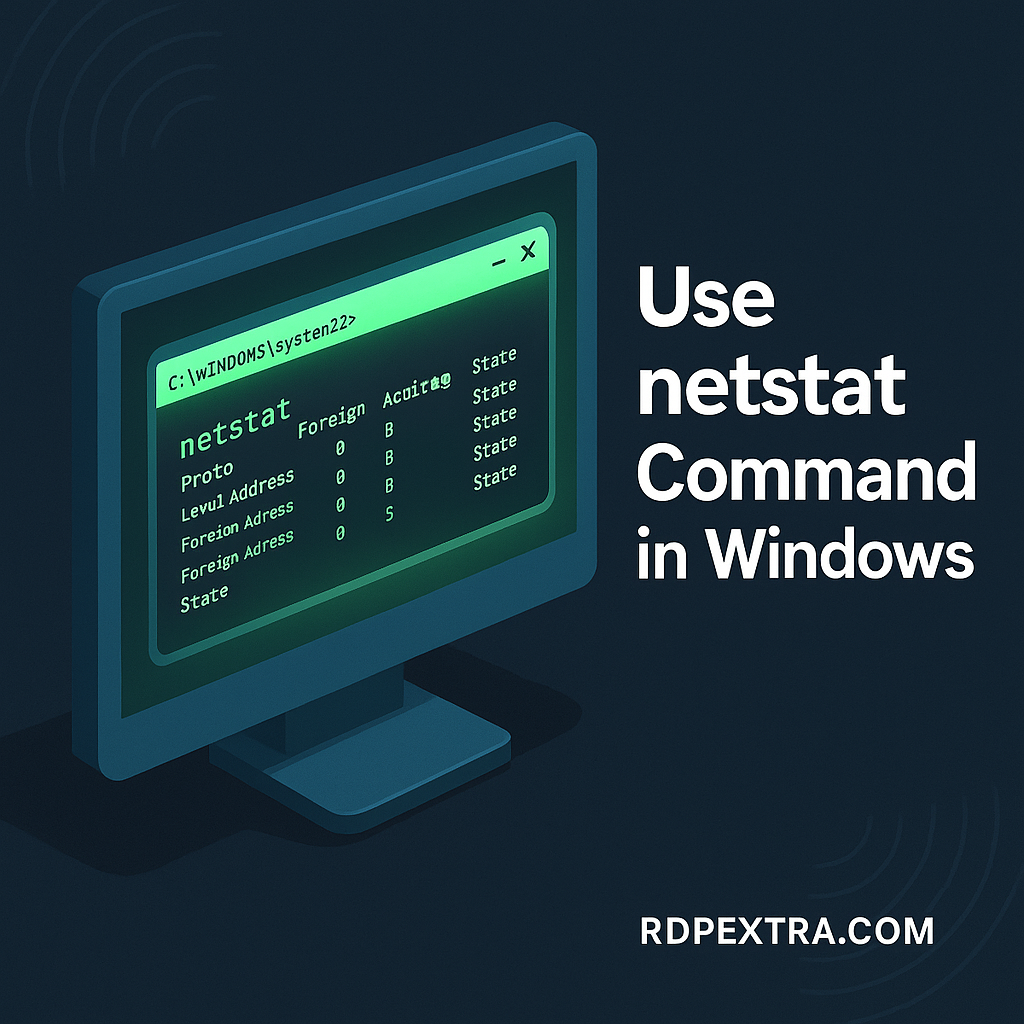
Mastering the Netstat Command in Windows: See What’s Really Going On in Your Network
If your PC is connected to the internet, chances are—something’s always talking. But what exactly? Hidden connections, unknown processes, and strange IPs can be lurking silently. That’s where the netstat command in Windows becomes your network detective Netstat Command in Windows: Full Guide + Examples.
Whether you’re a system admin, tech enthusiast, or just want to check open ports on Windows, this complete netstat tutorial breaks down everything you need—examples, options, filters, and even how to troubleshoot Windows network issues like a pro.
🧩 What is Netstat and Why Use It in Windows?
Netstat (short for “network statistics”) is a command-line network tool that displays active TCP and UDP connections, listening ports, Ethernet statistics, and protocol usage.
It’s built into Windows (since Windows 3.11!), so you don’t need to install anything.
- Why use netstat?
- Monitor network activity in real-time
- Identify suspicious or unauthorized connections
- Debug network latency or port conflicts
- Map programs to ports using their PID
- Monitor network activity in real-time
🛠 How to Use the Netstat Command in Windows
🔹 Launch Netstat from Command Prompt
- Press Win + R, type cmd, and hit Enter.
- In the terminal, type:
netstatBy default, you’ll see a basic list of active connections. But that’s just the beginning…
🔹 Netstat Syntax Overview
netstat [options] [-p proto] [-n] [interval]Each parameter or option customizes what you see: protocol filters, numeric IPs, PIDs, and more.
⚙️ Essential Netstat Parameters and What They Do
🔸 netstat -a: Display All Connections & Listening Ports
Shows all TCP and UDP connections + listening ports. Great to see open ports.
🔸 netstat -n: Show Numeric IPs
Avoids DNS lookups and speeds up output by showing raw IPs instead of hostnames.
🔸 netstat -o: View Process IDs (PIDs)
Links each connection to a PID. Use Task Manager to trace the program behind it.
🔸 netstat -p tcp or netstat -p udp: Filter by Protocol
Focus only on TCP or UDP traffic—useful for filtering specific types of traffic.
🔸 netstat -e: Display Ethernet Statistics
View data like packets sent/received, errors, and discards—perfect for network diagnostics.
🔸 netstat -r: Display the Routing Table
Similar to route print, it shows your system’s current IP routing decisions.
💡 Advanced Netstat Examples for Network Troubleshooting
Check All Open and Listening Ports
netstat -an
✅ Show Established TCP Connections Only
netstat -an | findstr ESTABLISHED
✅ Find Which Process is Using a Specific Port
netstat -ano | findstr :443
Then match the PID to a process using:
tasklist | findstr [PID]
✅ Run Netstat Every 10 Seconds
netstat -an 10Continuously monitors connections at 10-second intervals.
✅ Use Netstat with Filters
netstat -an | findstr 192.168Filters results to connections involving a specific IP range.
🔍 How to Read and Interpret Netstat Output
| Column | Meaning |
|---|---|
| Proto | Protocol (TCP/UDP) |
| Local Address | Your machine’s IP and port |
| Foreign Address | The remote IP and port |
| State | TCP state (e.g., LISTENING, ESTABLISHED) |
| PID | Process ID of the app using the port |
- Common TCP States:
- LISTENING: Awaiting connections
- ESTABLISHED: Active connection
- TIME_WAIT / CLOSE_WAIT: Connection teardown phase
- LISTENING: Awaiting connections
- IPv4 vs IPv6:
- 0.0.0.0 means all IPv4 interfaces
- [::] is for IPv6
- 0.0.0.0 means all IPv4 interfaces
Tip: Use netstat -f to show FQDNs (Fully Qualified Domain Names) instead of raw IPs.
🔄 Netstat vs Other Tools in Windows
| Tool | |
|---|---|
| Netstat | Lightweight CLI for quick inspection |
| Route Print | Shows routing table info |
| Resource Monitor | GUI tool for process-port map |
| TCPView (Sysinternals) | Real-time port monitor |
For GUI lovers, TCPView is like netstat on steroids—with filtering, live updates, and color codes.
🛡 Security and Performance Insights Using Netstat
- Netstat can help you:
- Spot suspicious foreign IPs or unauthorized apps
- Catch malware communicating silently
- Find high-bandwidth apps consuming data
- Detect port conflicts slowing services
- Spot suspicious foreign IPs or unauthorized apps
Pro tip: Run netstat on a clean system, save the output, and use it as a baseline to spot anomalies later.
✅ Conclusion: Make Netstat Part of Your Troubleshooting Toolkit
Whether you’re battling lag, Netstat Command in Windows: Full Guide + Examples checking for intrusions, or just curious about your network traffic, the netstat command in Windows is a simple but powerful ally.
Practice regularly. Try different netstat options and filters. The more you explore, the better you’ll understand your system’s behavior.

Leave a Reply